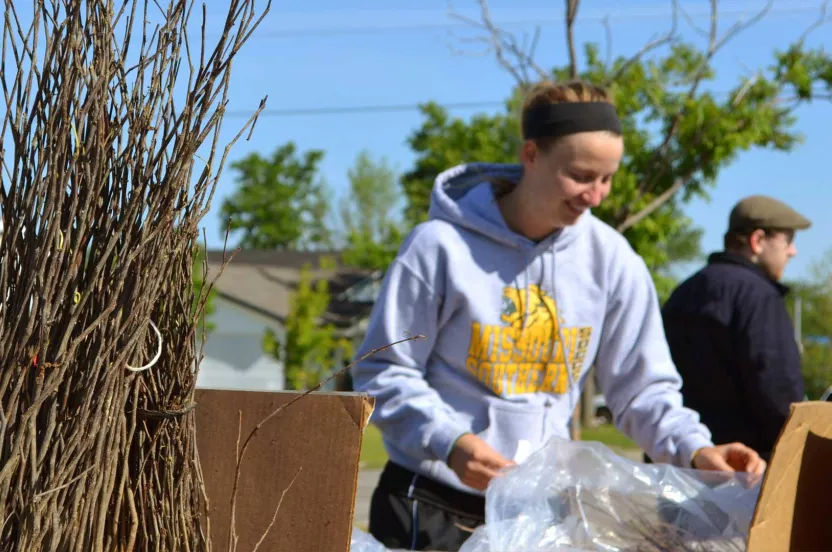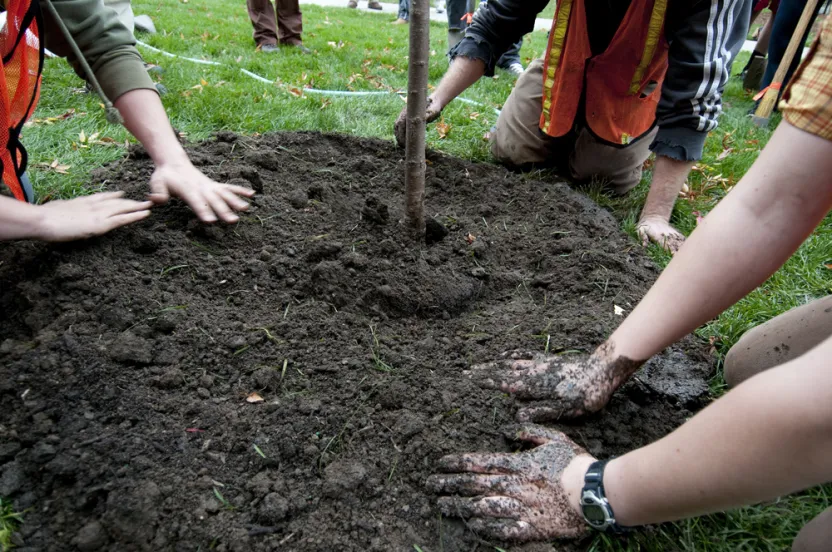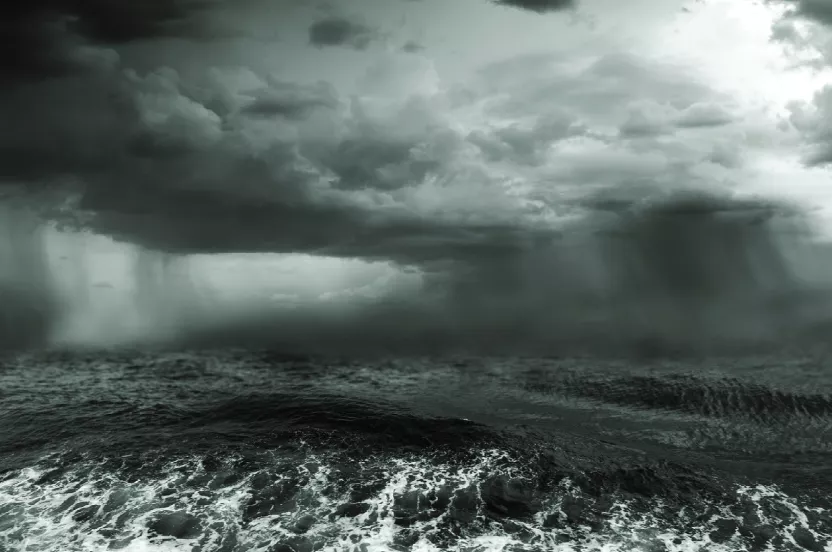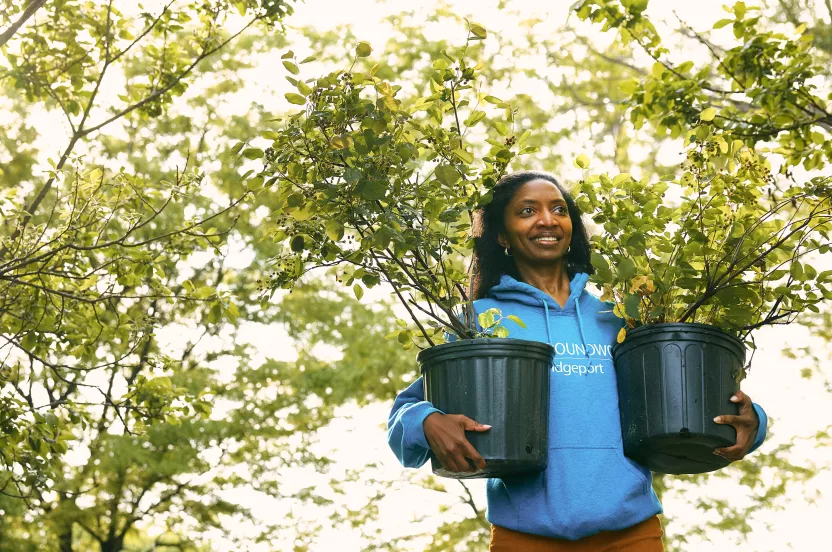Give before midnight on July 31 to double your impact where trees need us most. CHOOSE A PROJECT
Honoring 20 Years of Recovery in the Lower Ninth Ward
Tree plantings are revitalizing this historic and underserved New Orleans community.
June 16, 2025
Twenty years after Hurricane Katrina, scars from this storm are still prevalent in the Lower Ninth Ward — and trees are proving key to recovery.
Catastrophic damage swept across the Gulf Coast when Hurricane Katrina made landfall in 2005, leaving a decades-long trail of heartbreak in its wake. This storm — known as one of the deadliest and most costly hurricanes in U.S. history — forever changed people's lives, delineating their memories as pre- and post-Katrina.
Twenty years later, scars from this storm are still prevalent in the Lower Ninth Ward — a beloved and notoriously devastated neighborhood — including vacant lots where homes once stood, remnants of housing footprints, and a tree canopy that was nearly wiped out by floodwaters after the levees failed. As the community was inundated with water, including saltwater from Lake Pontchartrain, many of the trees were either uprooted or severely damaged.
“We had everything we needed right in our community — grocery stores, barbershops, hairdressers, cleaners,” says Cynthia Guillemet, longtime resident of the community and president of the Lower Ninth Ward Homeownership Association. “Everyone knew everyone. It was like one big family. But after Katrina, everything changed.”
There’s a clear contrast to other parts of the city which have been fully rebuilt, and community members continue to come together to restore what was lost. On Martin Luther King Jr. Day, nearly 150 dedicated volunteers braved the unusually-frigid temperatures for a day of service, planting 130 native trees in the Lower Ninth Ward. It was a tangible reminder of how special this neighborhood is to the whole of New Orleans.
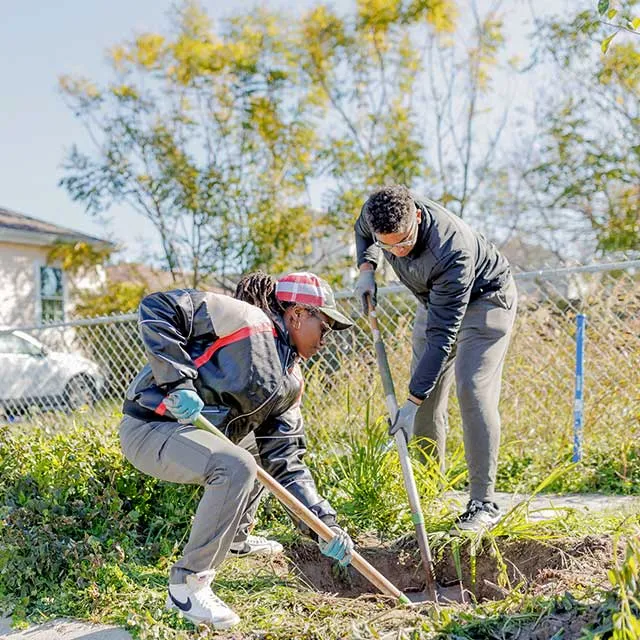
The planting project was only a fraction of larger efforts to rebuild and revitalize this neighborhood, led by Sustaining Our Urban Landscape (SOUL). Using trees as its tool of choice, the nonprofit rooted in New Orleans is on a mission to increase climate resiliency while bringing environmental benefits to neighborhoods still recovering from past disasters, like Katrina. In 2023, SOUL published an award-winning New Orleans Reforestation Plan — a blueprint for reforesting the neighborhood to improve the environment, quality of life, economics, and public health.
With a rich history and a deep sense of community, the Lower Ninth Ward is a place that residents were determined to return to after the devastation of Hurricane Katrina. Yet, despite the strong spirit of its people, this neighborhood has been left behind in many ways. The neighborhood hasn’t had a commercial grocery store since 2005, and much of it is designated as a food desert, according to the USDA Food Desert Locator.
To help address food insecurity and provide access to fresh fruit, SOUL’s project is offering 40 fruit trees to private properties. Additionally, by planting native, water-loving trees, like live oaks, the organization’s goal is to mitigate millions of gallons of stormwater runoff, contribute to cleaner air, and decrease the neighborhood’s temperature by up to ten degrees as it faces increasingly hotter temperatures, especially in the summer.
Federal-level data notes that New Orleans’ heat waves are now the longest in the country, and that the Lower Ninth Ward, specifically, experiences more than 100-207 days of extreme heat annually. New Orleans experienced its hottest summer to date in 2023, according to the National Weather Service, recording a high of 105 degrees Fahrenheit — breaking its previous record of 102 degrees set in 1980. Coupled with extreme heat, the summer of 2023 was also the second driest on record.
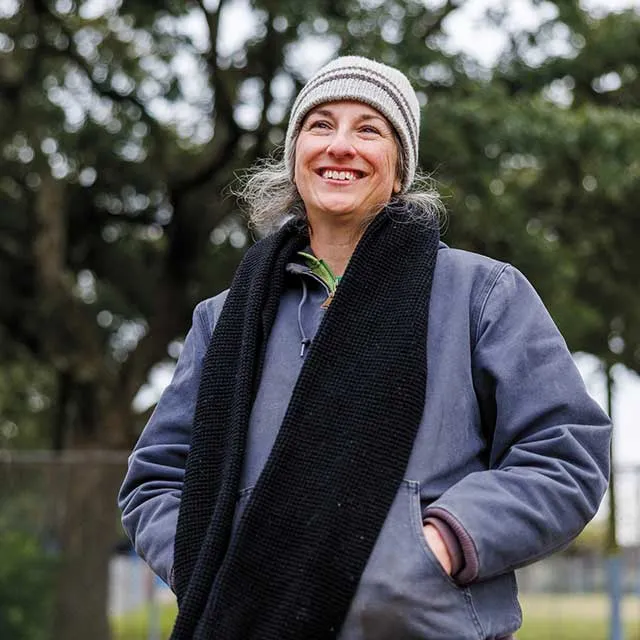
“We’re thrilled to be here helping to bring back the tree canopy of this neighborhood,” says Susannah Burley, founder and executive director of SOUL. “Not just for beautification reasons — although it is nice how happy trees make people — but we're excited to help mitigate all the flooding issues which occur all over the city.”
SOUL offers trees to every house on every block, with an opt-out approach in place. This is meant to provide balanced distribution of trees to anyone who wants them, making it as easy as possible.
“Support from the Arbor Day Foundation allows us to do this work at a real, meaningful scale,” Burley says. “For us, success would look like people calling us in five to ten years and saying, ‘My street isn't flooded anymore, or my energy bill went down because my roof is now shaded.’”
In partnership with the Arbor Day Foundation, SOUL has planted and maintained a total of 640 trees thus far, engaging nearly 330 volunteers.
The Arbor Day Foundation has been invested in helping communities recover from major natural disasters since 2005 out of the great need for trees in the Gulf Coast following Hurricane Katrina — which destroyed or severely damaged more than 320 million trees along its path. Since then, the Foundation has worked with local partners to get trees in the hands of affected homeowners once they were ready to plant them. This work has continued to grow across the country and internationally, with more than 7 million trees being distributed for disaster recovery to date.
“All over the world, trees are a barometer of health and wealth,” Burley says. “Areas concentrated with trees have better health, the air is cleaner, people are exercising more. I think people just feel more valued when they have trees, they feel healthier, they feel happier.”
It's no secret that trees contribute to better mental and physical health. In fact, 91 percent of Americans believe that trees are important to the health and wellbeing of communities, and the same percentage of feel that trees help make neighborhoods more livable, according to a consumer report from the Arbor Day Foundation.
From reducing stress and anxiety to lowering blood pressure, trees can breathe new life into neighborhoods everywhere, especially those which have been battling environmental challenges and the impacts of warming weather.
